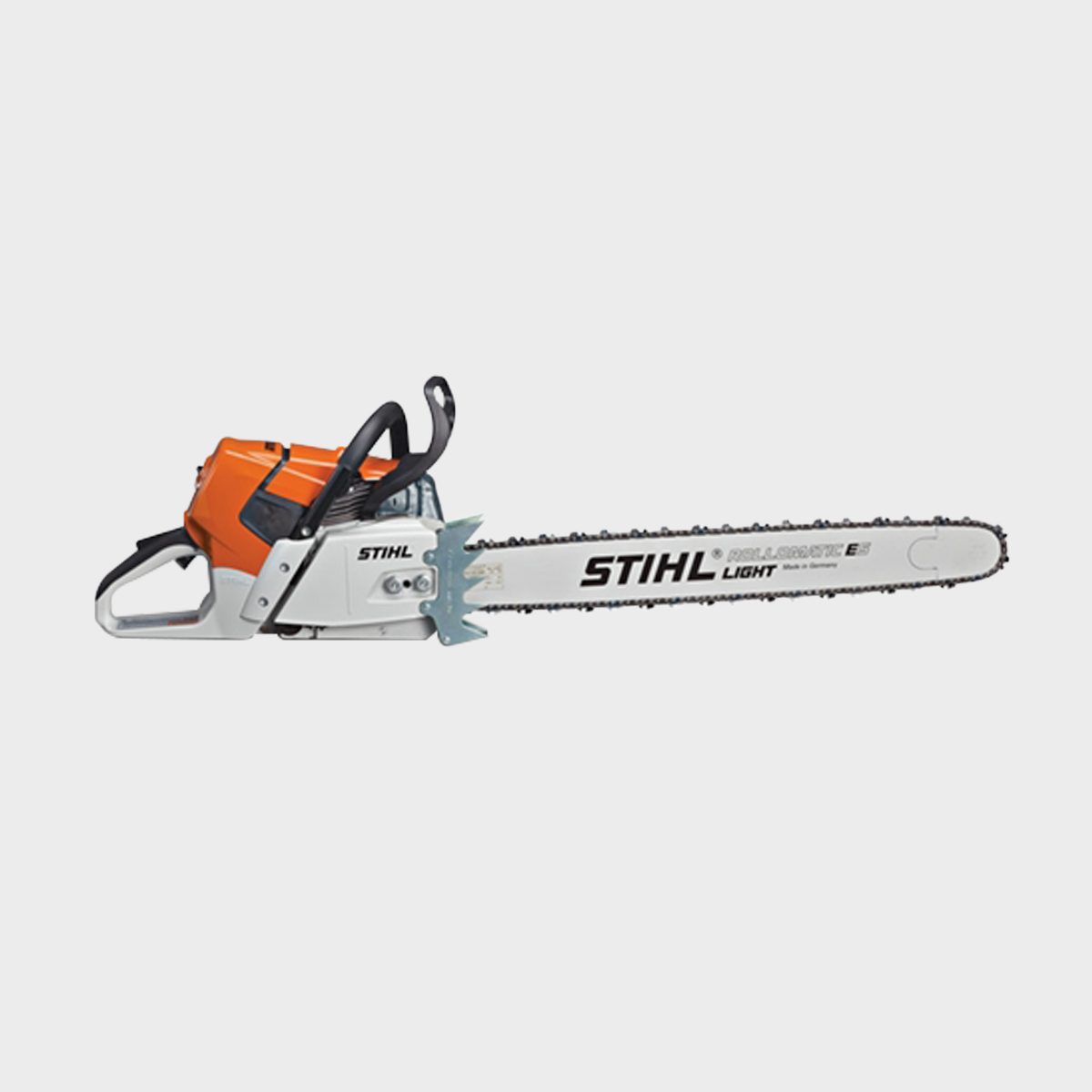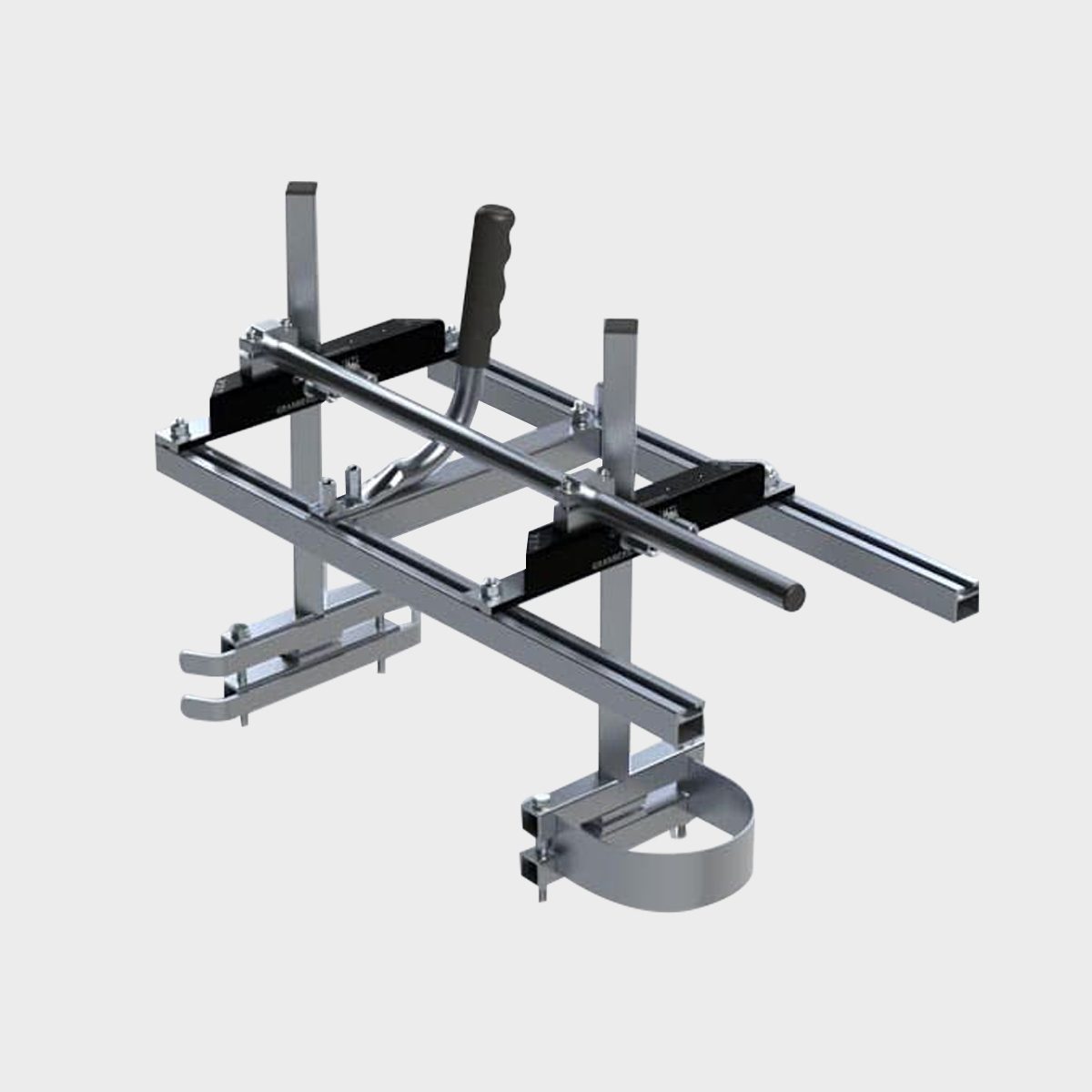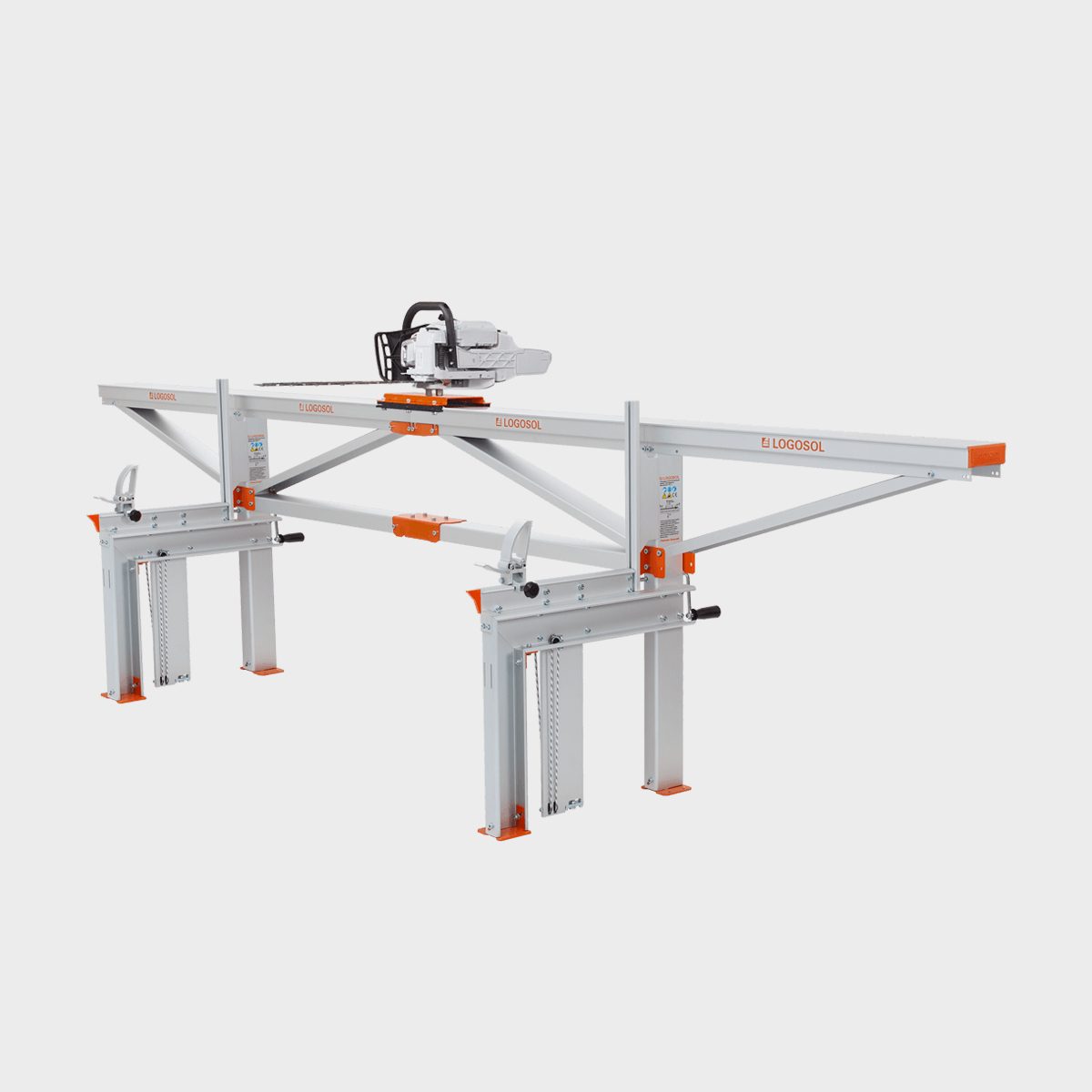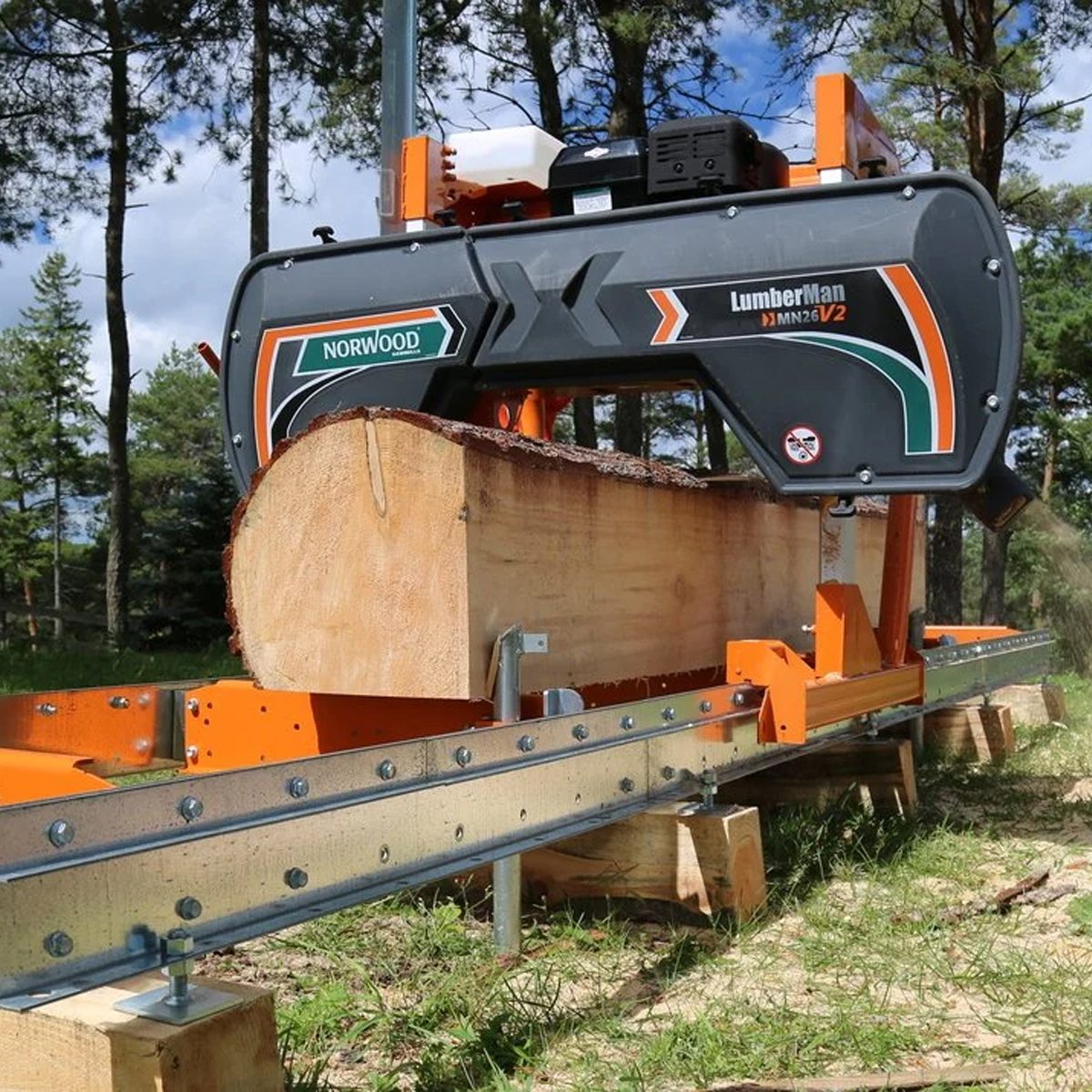In 2007 I got a call that changed my whole perspective on lumber. I’d been designing and building furniture for five years, buying wood from a great lumberyard. Then my pal from grade school called me. He had a healthy red oak that needed to come down and was wondering if I could use the wood for furniture.
Before then, I hadn’t thought of cutting my own lumber from a tree. I had another friend who owned a small chainsaw sawmill, a one-person milling device he was happy to lend me for a week. I’d never used a sawmill before myself. But after a 30-minute introduction to the basics of its operation, I was ready to go. I’ll admit, the process was labor-intensive and exhausting. But each slice of the sawmill was like opening a birthday present.
I haven’t looked back.
What Is a Sawmill?
For most people, the term “sawmill” likely conjures images of a large factory that mass-produces lumber. In this case, a “sawmill” is a one- or two-person device for milling lumber, i.e. cutting timber into construction-quality wood.
These sawmills can be set up permanently, stowed in a car or towed behind a vehicle on a trailer. The smallest are barely larger than a chainsaw, and the largest sit on 24-foot-long trailers!
What is a Sawmill Used For?
A sawmill lets a furniture maker accurately slice a log into slabs or planks of wood. This article discusses portable sawmills, but you’ll see some are more portable than others.
How Does a Sawmill Work?
Sawmills feature a cutting blade, a mechanism for cutting accurate thicknesses, and a track for the blade to travel. Some have welded tables as a flat reference point; others use an extension ladder to register the first flat cut.
Operators roll or lift the log into a stable position and lock it in place with wedges. Then the user sets the blade for an initial cut on the front end to define a top, flat surface. The saw blade travels along the track the length of the log and slices a flat surface. The top piece, often waste, is removed, revealing a flat datum from which all other cuts will be aligned.
After each cut, the blade slides back to the front and is lowered to the correct height. The user must take into account the thickness of the blade when measuring. Depending on the size of the log and desired yield, the log may be cut into flat slabs or rotated if certain types of lumber are desired.
Types of Sawmills
Chainsaw mills

As the name implies, this type employs an oil/gas chainsaw. These mills are designed for rough use but still require hourly maintenance. Bar lubricant must be topped off, and the proper oil/gas mix is essential for trustworthy cutting.
Chainsaw blades dull quickly. They must be sharpened every hour or replaced and sharpened professionally. When sawing lumber (as opposed to cutting down trees), a thinner ripping bar with a ripping chain is recommended, which still takes a hefty 3/16-in. kerf of wood.
Big chainsaws like the Husqvarna 395 XP and the Stihl 661 excel at powerful and efficient milling. Aftermarket bars as long as 42-in. can be mounted for larger capacity. Always be sure to use a chainsaw safely.
Alaskan style sawmill

Designed by Elof Granberg in the 1960s, this style features a chainsaw attached to a lightweight aluminum frame. Users place it atop a log laying on the ground. Granberg makes a range of sizes, from 24-in. and all the way up to 84-in.
The Alaskan-style mill is among the least expensive ways to cut logs into planks, especially if you already own a large chainsaw. Alaskan mills can be loaded into the trunk of a car and brought deep into the woods to cut specific downed trees.
While not the most efficient, the Alaskan mill is the epitome of bringing the tool to the job and can mill the largest trees. One downside: You must always work on the ground. Milling an 18-in.-dia. tree usually requires the user to be on their knees or hunched over throughout.
Chainsaw mill with frame

A more sophisticated take on the chainsaw mill, these models lift the chainsaw to waist height. Logosol F2 ($1,900), made in Sweden, features a large, lightweight aluminum support frame with super strong log-lifters. The Logosol lifts the log up to 24-in., so most of the cutting happens at waist height or above.
Another option: The North American-built PortaMill PM14 ($1,400), with a household aluminum extension ladder guiding the saw.
While the milling is more comfortable with these framed chainsaw mills, raising logs requires some real muscle! Logs can be rolled up ramps or stacked timbers, or ideally lifted by a tractor or skid steer. Cant hooks and other tools can assist in moving the logs to height. These models disassemble in about one hour and are easily transported.
Bandsaw mill

Bandsaws drive a wide blade with coarse teeth that spins between two large wheels. Mounted horizontally, the blade slices a 1/8-in. kerf through the wood as it cuts. The blade must be properly tensioned and dulls instantly when it comes in contact with dirt, sand or any embedded fastener. Most are gas-powered.
Numerous reputable brands sell bandsaw mills in various sizes with features that can jack up the price. Embellishments include water-cooled blades, de-barking blades or pneumatic log lifting mechanisms.
Super-simple versions with a flat table like the LumberMan MN27 from Norwood ($5,000) can handle a 12-foot-long log with a 23-inch cut capacity. This saw is nice because it sits low to the ground, but care must be taken to level the table for accurate cuts.
On the more expensive end, the Woodmizer LT50 Hydraulic Portable Sawmill ($49,000) sits on a heavy-duty trailer and can handle a 36-in.-dia. log up to 21 feet log. A log this size weighs upwards of three tons, so this saw comes with pneumatic arms that lift the log onto the sawmill bed.
Mid-size saws like the TimberKing 1220CRZ ($14,000) also sit on a trailer. It can handle a 33-in.-dia. log 17-ft. long. Instead of pneumatics, it features a winch system welded to the frame that helps get logs onto the bed of the saw.
One Last Thing
Logs are heavy! Utilizing an online log calculator, an eight-foot-long, 24-in.-dia. white oak log weighs in at more than 1,500 lbs.! Moving pieces this big requires muscle, lots of friends, or heavy machinery like a tractor or skid steer. Don’t underestimate the labor of moving logs around.
Where to Buy
You can purchase various types of sawmills through Saffords, Fox Forestry or Bailey’s.
Did you miss our previous article...
https://rsssuperfeeds.com/life-hacks/the-eleven-percent-meet-bella-weinstein-founder-of-handymaam-goods






